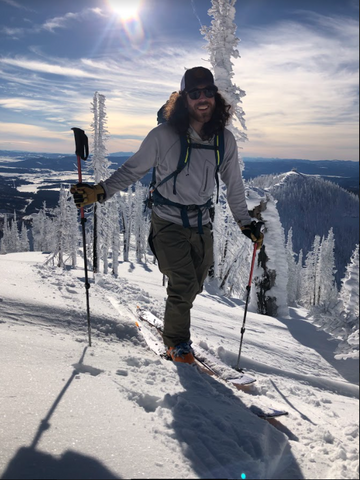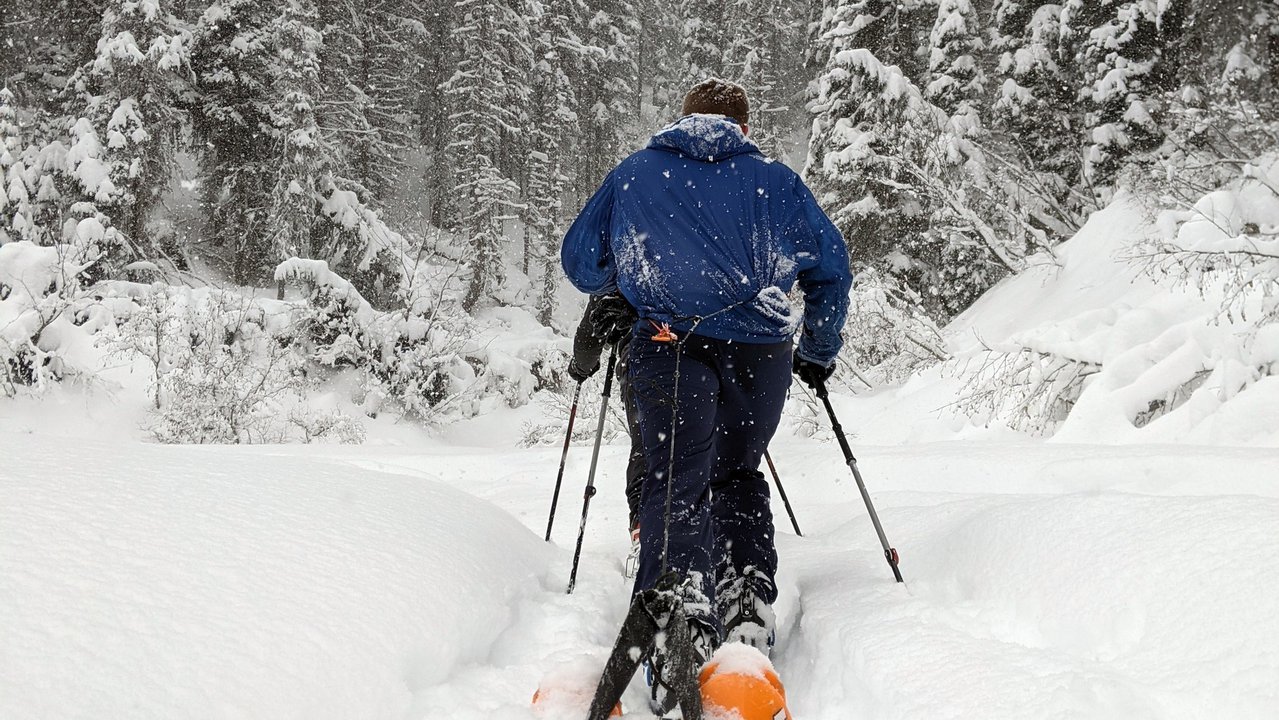Backcountry skiing can offer a new level of freedom for skiers looking to explore skiing where mechanized access doesn't reach. Whether looking to climb and descend tall peaks in the winter, having as much untouched powder as desired, or looking to enjoy being outdoors without the crowds of a resort, there are many reasons to head into the backcountry. But, with this freedom comes responsibility. Ski patrol is not around to help you if you get into a sticky situation or are injured.
Last season, I tore my ACL and meniscus while skiing in the backcountry without cell service or an inReach. My partners and I had to manage a self-rescue and gained a lot of insight through it. I wanted to share information on how to build a sled in the backcountry out of the gear in your pack in hopes that you will be better prepared in case an emergency happens.
As a new storm rolled in last February and avalanche danger bumped up to high, a group of three of us went in search of low-angle powder. We found what we were looking for, a mellow 200-foot slope with no overhead hazard. One of my touring partners for the day mentioned it being the best snow he had ever skied. Deep and blower, the conditions all skiers dream of.
After putting a couple of laps down the slope, I dropped in for my third run, and on a rollover crunched a rock and crashed. Righting myself onto my hip, I noticed my knee felt a bit off. There was no pain, but it felt “loose”. Upon standing and placing weight on my left leg, the knee buckled and I fell back into the snow. I knew I wasn’t going to be getting out of there under my own power.
Commence problem-solving. There was a road below us which after splinting my knee, I could slide down to, then build a sled from my skis and my two friends could haul me out. So here is what you’re going to need in order to build a sled from the gear in your pack.
Essential Gear
Broken Down Ski Poles
4 Ski Straps
30 Feet of Paracord
Backpack
Optional Gear
Webbing
Gloves (For Padding Hips)
Hand/Toe Warmers
Bivy Sack/Tarp
HOW TO PUT THE SLED TOGETHER:
Attach two cross-sections from your ski poles at the toe and heel of the bindings with ski straps. This builds the frame of the sled.
Attach the paracord to the front cross-section for hauling. I like to use a girth-hitch which leaves two lines of paracord for two people to haul. The two strands go to the people hauling.
Pad the hips of the people hauling with gloves so the paracord doesn’t painfully dig into their hips.
Alternatively, keep a loop of webbing in your pack for your waist and attach the paracord to that.
Use one or two backpacks to create the seat of the sled. Attach them with the back facing up. The waist belt can be used to hold the patient to the sled so they don’t fall off.
You are ready to haul
CHECK OUT PAUL'S HOW TO VIDEO:
https://www.youtube.com/watch?v=YqkYmo-I_do&t=1s
With the sled built, the people hauling better have packed some mental grit. They will have to work extremely hard. In my scenario, we were 3.5 miles back which is an incredibly long way to go. It took us six hours from my injury until we were back at the car. Hand warmers were crucial for keeping my hands from freezing while being immobile. Being unable to move for six hours, it was difficult to keep warm. A tarp or bivy sack would have also been very helpful for keeping the dumping snow off me which just led to me being more wet and cold as the night progressed.
Our self-rescue went as smooth as one could possibly go given the circumstances. Even so, it was a long and painstaking process. This is why it is important to have basic self-rescue skills if you recreate in the backcountry. The basic gear is already in your pack, or it’s a very inexpensive purchase. To practice building a sled takes less than an hour of your time. So get the gear and practice. You do not want to be figuring it out for the first time in the middle of an emergency. Again, practice your emergency skills, you want them to be second nature.
Backcountry skiing is an empowering and fun sport, but the reality of the danger needs to be faced. A little bit of preparation can go a long way when things start to go wrong. Learn the skills, practice them, and be a safer skier.
Written by Paul Fotter

For more backcountry content make you sure you give Paul a follow on Instagram @paulfotter.


Comments